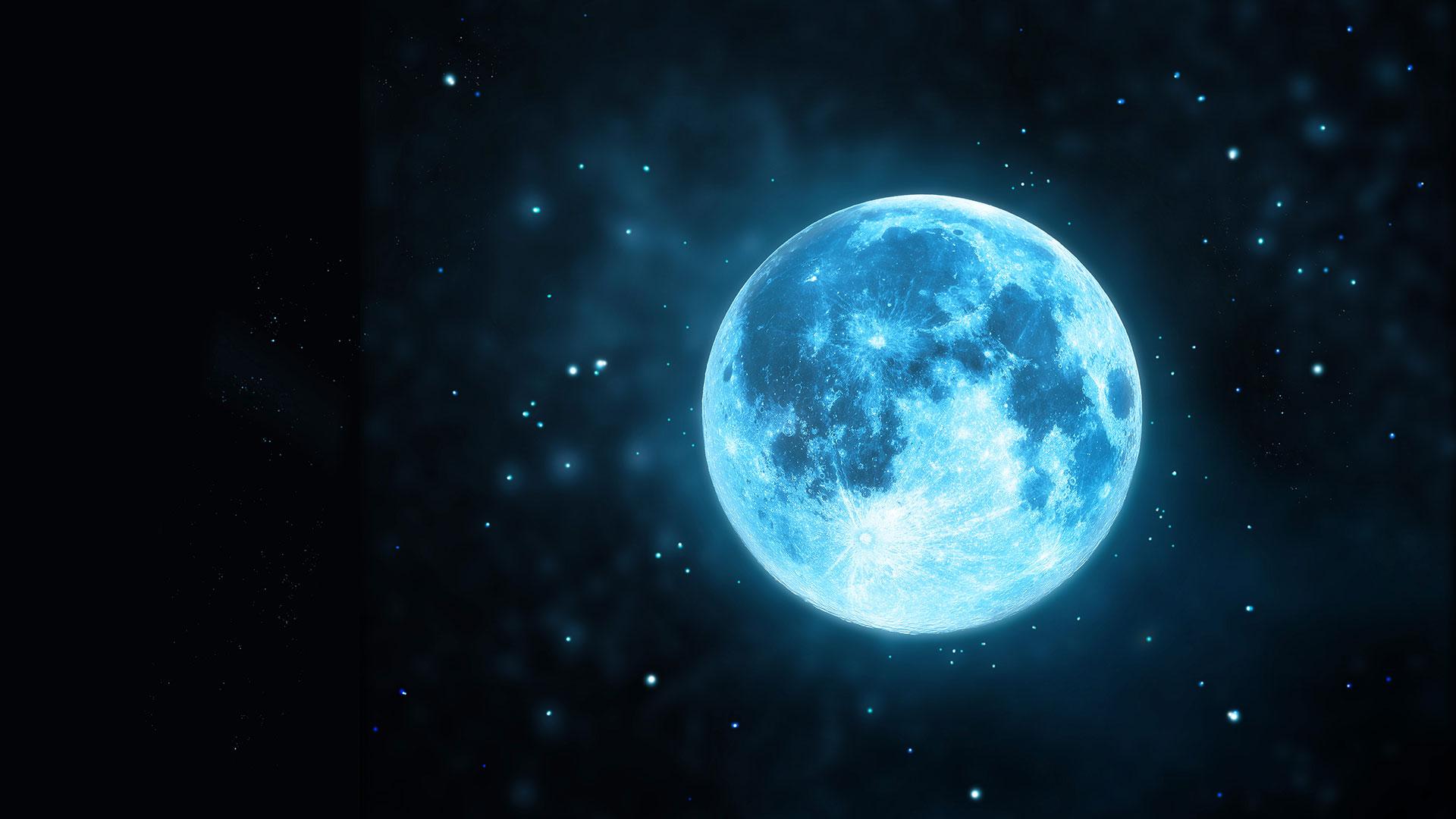30 January 2023
07 June 2018
Lunar calibration has been identified by both GSICS and CEOS/WGCV as a calibration and inter-calibration method that should be implemented for instruments that have the capability to image the Moon. Within the framework of its involvement in GSICS activities, and its own operational needs, EUMETSAT developed, and made available to registered members from the Lunar Calibration Community, the GSICS Implementation of the ROLO model (GIRO).
The spectral range of application of the GIRO covers the interval between 350 nm and 2350 nm. It models lunar irradiances for phases angles comprised in absolute value between about six and 90 degrees. The GIRO has been endorsed as the established community-available reference for lunar calibration, validated against the USGS ROLO model. It was a core goal following the First Joint GSICS/IVOS Lunar Calibration Workshop in December 2014,which was organised by EUMETSAT, in collaboration with USGS, CNES and NASA.
The GIRO could be used to inter-calibrate in the reflective part of the solar spectrum target instruments with reference instruments. The current GSICS reference for reflective solar bands is the MODIS instrument onboard Aqua. It is planned to move to Suomi-NPP VIIRS. In order to account for the differences between the instrument spectral response functions. Spectral band adjustment factors must be estimated for a proper inter-calibration.
Objectives
The main objective of this study was to validate the Spectral Band Adjustment Factors (SBAFs) derived from the GIRO using lunar hyperspectral measurements from the ENVISAT SCIAMACHY or the HYPERION instruments, and, optionally, the Metop GOME-2 instrument. This activity is part of an international effort to prepare for the definition of a GSICS inter-calibration method using the Moon as a transfer target (through the GIRO model).
This effort addresses instruments aboard Low Earth Orbit satellites and Geostationary Earth Orbit satellites. The reference instruments are the Aqua MODIS and the Suomi-NPP VIIRS instruments. The target instruments are potentially any other radiometer aboard a GEO or LEO platform with lunar observations capabilities.
This study focuses on two aspects that are highly relevant to inter-calibration:
- Accounting for the differences in spectral response between instruments to be inter-calibrated
- Supporting the definition of the reference calibration scale to be matched.
As part of this project, an option was added to assess the possibility to use the Metop GOME-2 lunar observations. This assessment was done to support the GOME-2 missions current in operation on Metop-A and -B but also to prepare GOME-2 operations on Metop-C, and for future mission instruments with similar characteristics like Sentinel-4 or 5.
Overview
The study plan was organised around four activities:
- Deriving SBAFs from hyperspectral measurements in a similar way it is performed over DCC targets within the GSICS community.
- Linking the ROLO/GIRO to an absolute irradiance scale using hyperspectral measurements and data from imagers such as SEVIRI, MODIS Aqua, and NPP VIIRS.
- Performing an assessment of the information required to make use of GOME-2 lunar observations.
- Depending on the results of the previous activity, to perform the analysis of the GOME-2 lunar observations.
Activity 1
The hyperspectral imager SCIAMACHY was used to validate the spectral band adjustment factors (SBAFs), and the radiometric properties of the GSCIS Implementation of ROLO (GIRO). More than 1,000 SCIAMACHY lunar spectra and matching solar spectra collected between 2002 and 2012 were used.
The lunar phase angles of the SCIAMACHY measurements covered -80 to +20 degrees, and the lunar libration angles ranged from -8 to +8 degrees longitude and -8 to +6 degrees latitude. SBAFs were calculated by both GIRO and using the measured SCIAMACHY lunar albedo, multiplied by the GIRO solar irradiance in order to arrive at a SCIAMACHY-based lunar irradiance. SBAFs were also derived for DCC and Libya1.The GIRO-based and SCIAMACHY-based SBAFs agree within typically 0.5%.
The lunar phase angle dependence of the SBAFs was also investigated. GIRO-based SBAFs vary between -0.5% and +0.5% with lunar phase, while SCIAMACHY-based SBAFs vary between -1.5% to +1.6% with lunar phase angle. Standard error estimates for GIRO-based SBAFs are below 0.05% and below 0.015% for SCIAMACHY-based SBAFs.
The overall conclusion for Activity 1 is that SCIAMACHY-based SBAFs and GIRO-based SBAFs are similar at the 0.5% level, and that lunar phase angle dependency is an effect at the few percent level and should be taken into account.
Activity 2
The radiometric differences between the GIRO model and satellite measurements (AQUA MODIS, NPP VIIRS, MSG-1 SEVIRI, MSG-2 SEVIRI, MSG-3 SEVIRI and ENVISAT SCIAMACHY) were investigated. Results are summarised in Figure 1 .
No clear and consistent conclusion can be drawn on the radiometric scaling factor between GIRO and all instruments combined. A general trend does however seem to be that the measurement / GIRO ratios are somewhat higher (up to about 10%) at wavelengths in the 400 to 500 nm range, the values are closer to unity in the 600 to 900 nm range, and the ratios increase again above 900 nm to values of about 1.1 near 1700 nm.


Lunar phase angle dependence as represented in Figure 2 is clearly different for the GIRO model compared to the satellite measurements. The wavelength dependence of the lunar phase angle dependence is distinct, and the deviation between measurement and model increases at both shorter wavelengths and longer wavelengths. Around wavelengths between 450 nm and 800 nm the lunar phase angle dependence is well described by GIRO. Outside this range the radiometric errors can increase up to several tens of percent. The residual libration angle dependence of the ratio of satellite lunar measurements and GIRO model is small, at most 2% peak-to-peak for extreme libration angles and typically much smaller (plot not shown here).
The overall conclusion for Activity 2 is that GIRO absolute calibration seems accurate at 600 nm compared to all three MSGs and SCIAMACHY, however, other instruments and other wavelengths do not agree with each other on the correct absolute at 600 nm. All instruments agree that the GIRO lunar phase dependence might require an update outside the 450–800 nm range.
Activities 3 and 4
The GOME-2B and GOME-2A lunar measurements were transformed into stable lunar irradiance and reflectance spectra and dependencies on lunar, solar and viewing geometries were derived from a lunar reflectance model. The focus has been on GOME-2B, due to known calibration issues of GOME-2A early in its mission.
However, the observations suffered from several issues and anomalies, such as incorrect background correction, straylight and missing portions of the Moon due to steep angle of relative motion compared to slit or starting/stopping the measurement too late/soon. Each issue is investigated in detail and improvements or mitigations suggested for (future) observations, together with suggested robust verification tests to determine whether the issue has been resolved.
The derived dependencies on lunar, solar and viewing geometries and time (namely GOME-2 degradation) are presented together with their uncertainties. As an end result, Figure 3 and Figure 4 show the GOME-2B-derived lunar reflectance and irradiance with their uncertainties (yellow) for a representative lunar phase angle of 65°, no libration and at nominal Sun and Moon distances. The uncertainties (due to mentioned issues and anomalies) however are not to the level of accuracy required to improve on the existing GIRO model dependencies.




